Peugeot 208 VS MINI Aceman – Specs, Efficiency & Price Comparison
Which model is the better choice – the Peugeot 208 or the MINI Aceman? We compare performance (156 HP vs 258 HP), boot capacity (309 L vs 300 L), efficiency (14 kWh4.70 L vs 14 kWh), and of course, the price (19700 £ vs 29900 £).
Find out now which car fits your needs better!
The Peugeot 208 (Hatchback) is powered by a Petrol MHEV, Petrol or Electric engine and comes with a Automatic or Manuel transmission. In comparison, the MINI Aceman (SUV) features a Electric engine and a Automatic gearbox.
When it comes to boot capacity, the Peugeot 208 offers 309 L, while the MINI Aceman provides 300 L – depending on what matters most to you. If you’re looking for more power, you’ll need to decide whether the 156 HP of the Peugeot 208 or the 258 HP of the MINI Aceman suits your needs better.
There are also differences in efficiency: 14 kWh4.70 L vs 14 kWh. In terms of price, the Peugeot 208 starts at 19700 £, while the MINI Aceman is available from 29900 £.
Compare all the key specs now and find out which model fits your lifestyle best!
Peugeot 208
The Peugeot 208 exudes a distinctive French charm, combining sleek lines with an assertive stance on the road. Inside, it offers a modern and sophisticated cabin, complete with intuitive technology and high-quality finishes to enhance the driving experience. Its agile handling and efficient performance make it a delightful choice for both city commuting and longer journeys.
details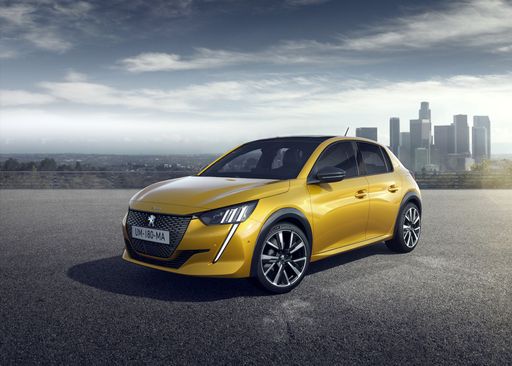 @ www.media.stellantis.com
@ www.media.stellantis.com
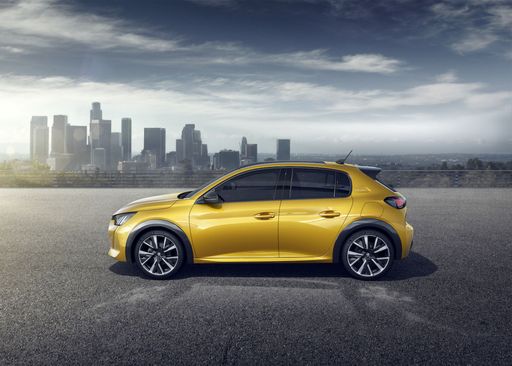 @ www.media.stellantis.com
@ www.media.stellantis.com
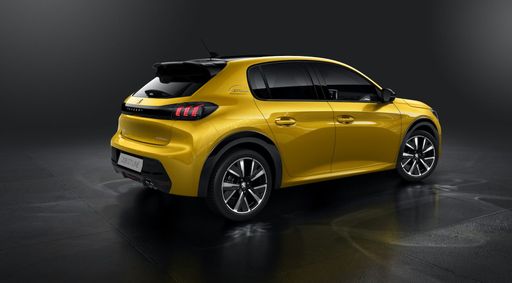 @ www.media.stellantis.com
@ www.media.stellantis.com
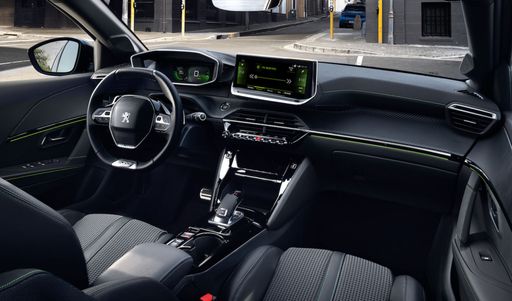 @ www.media.stellantis.com
@ www.media.stellantis.com
MINI Aceman
The MINI Aceman offers a fresh take on urban mobility, blending iconic design elements with modern technology. Its compact form is paired with an interior that exudes both comfort and style, making it a popular choice for city drivers. With an emphasis on sustainability, the Aceman features eco-friendly materials and innovative features that enhance the driving experience.
details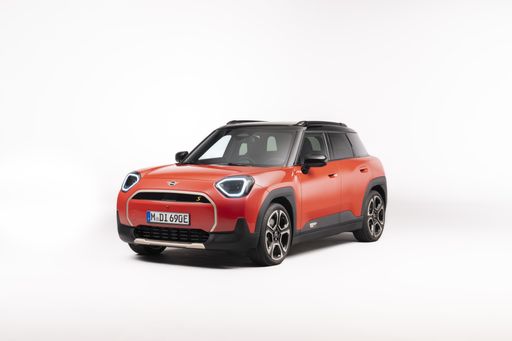 @ press.bmwgroup.com
@ press.bmwgroup.com
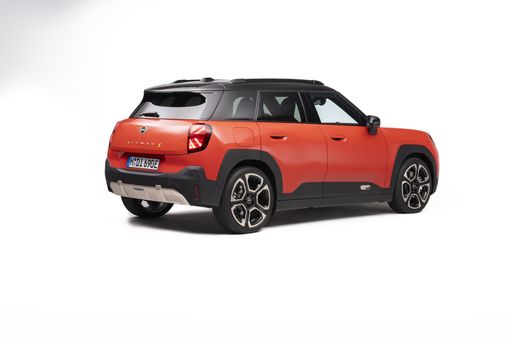 @ press.bmwgroup.com
@ press.bmwgroup.com
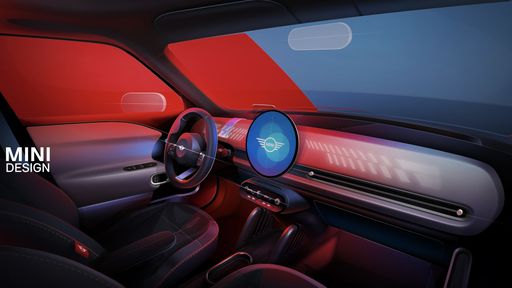 @ press.bmwgroup.com
@ press.bmwgroup.com

|

|
|
|
|
Costs and Consumption |
|
|---|---|
|
Price
19700 - 35000 £
|
Price
29900 - 41000 £
|
|
Consumption L/100km
4.7 - 5.4 L
|
Consumption L/100km
-
|
|
Consumption kWh/100km
14 - 16.1 kWh
|
Consumption kWh/100km
14 - 16 kWh
|
|
Electric Range
363 - 410 km
|
Electric Range
309 - 405 km
|
|
Battery Capacity
46 - 51 kWh
|
Battery Capacity
38.5 - 49.2 kWh
|
|
co2
0 - 121 g/km
|
co2
0 g/km
|
|
Fuel tank capacity
44 L
|
Fuel tank capacity
-
|
Dimensions and Body |
|
|---|---|
|
Body Type
Hatchback
|
Body Type
SUV
|
|
Seats
5
|
Seats
5
|
|
Doors
5
|
Doors
3
|
|
Curb weight
1165 - 1530 kg
|
Curb weight
1720 - 1825 kg
|
|
Trunk capacity
265 - 309 L
|
Trunk capacity
300 L
|
|
Length
4055 mm
|
Length
4079 mm
|
|
Width
1745 mm
|
Width
1754 mm
|
|
Height
1430 mm
|
Height
1514 mm
|
|
Payload
380 - 430 kg
|
Payload
450 - 455 kg
|
Engine and Performance |
|
|---|---|
|
Engine Type
Petrol MHEV, Petrol, Electric
|
Engine Type
Electric
|
|
Transmission
Automatic, Manuel
|
Transmission
Automatic
|
|
Transmission Detail
Dual-Clutch Automatic, Manual Gearbox, Reduction Gearbox
|
Transmission Detail
Reduction Gearbox
|
|
Drive Type
Front-Wheel Drive
|
Drive Type
Front-Wheel Drive
|
|
Power HP
101 - 156 HP
|
Power HP
184 - 258 HP
|
|
Acceleration 0-100km/h
8.3 - 10.9 s
|
Acceleration 0-100km/h
6.4 - 7.9 s
|
|
Max Speed
150 - 200 km/h
|
Max Speed
160 - 200 km/h
|
|
Torque
205 - 270 Nm
|
Torque
290 - 350 Nm
|
|
Number of Cylinders
3
|
Number of Cylinders
-
|
|
Power kW
74 - 115 kW
|
Power kW
135 - 190 kW
|
|
Engine capacity
1199 cm3
|
Engine capacity
-
|
General |
|
|---|---|
|
Model Year
2023 - 2024
|
Model Year
2024 - 2025
|
|
CO2 Efficiency Class
C, D, A
|
CO2 Efficiency Class
A
|
|
Brand
Peugeot
|
Brand
MINI
|
Peugeot 208
A Glimpse into the Future: The New Peugeot 208
The Peugeot 208, with its sleek design and innovative features, continues to set benchmarks in the automotive industry. As a hatchback, it seamlessly blends style with practicality, offering the perfect solution for urban driving and long-distance travels alike. In this article, we delve into the technical details and innovations that distinguish the latest iterations of the Peugeot 208.
Engine Options: Efficiency Meets Performance
The Peugeot 208 provides an array of engine options catering to different driving preferences. Featuring both petrol Mild-Hybrid technology and full electric powertrains, it offers a versatile range designed to accommodate eco-conscious drivers as well as those who prioritise performance.
With power outputs ranging from 101 PS to 156 PS, and a torque span of 205 Nm to 270 Nm, these machines are meticulously engineered to provide thrilling yet efficient drives. The petrol versions utilise a three-cylinder 1199 cm³ engine, optimising fuel consumption between 4.7 and 5.4 L/100km, while the electric e-208 models boast an impressive range of up to 410 km on a single charge.
Advanced Transmission Systems
The Peugeot 208 models come equipped with an advanced automatic transmission system, employing either a dual-clutch automatic gearbox or a manual transmission, depending on the chosen variant. These systems guarantee smooth gear transitions, thus enhancing driving pleasure and overall efficiency.
Performance and Environmental Considerations
From a performance standpoint, the Peugeot 208 impresses with its ability to accelerate from 0 to 100 km/h in between 8.3 to 10.9 seconds, depending on the model chosen. This level of performance is complemented by a top speed ranging from 150 to 200 km/h, ensuring that the 208 is more than capable of holding its own on the motorway.
With environmental consciousness at the forefront, the vehicle's CO2 efficiency class ranges from A to D, further establishing the Peugeot 208 as a responsible option for modern drivers keen on reducing their carbon footprint.
Comfort and Practicality: A Class Act
The interior of the Peugeot 208 reflects its exterior's stylish flair. It comfortably seats five passengers and offers a boot capacity of 265 to 309 litres, accommodating both city commutes and weekend getaways. Advanced comfort features and a state-of-the-art infotainment system ensure that rides are as enjoyable for passengers as they are for the driver.
Cost Considerations
The Peugeot 208 manages to strike a remarkable balance between cost efficiency and luxury. With prices ranging from €22,950 to €40,825, there is a variant to suit most budgets while still providing a premium experience. Additionally, the monthly costs and costs per kilometre are kept in check, making it an economically sound choice in the long term.
Dimensions and Design: Compact yet Spacious
Measuring 4,055 mm in length, 1,745 mm in width, and 1,430 mm in height, the Peugeot 208 maintains a compact profile that is perfectly suited to tight urban environments. Despite its manageable size, it offers ample space inside, thanks in part to clever design and engineering.
Conclusion: A Future-Proof Choice
The Peugeot 208 is a testament to modern automotive innovation. Whether powered by traditional engines or fully electric powertrains, it consistently delivers on performance, efficiency, and style. The combination of cutting-edge technology and sustainable practices places the Peugeot 208 as a forward-thinking choice for drivers seeking a vehicle that epitomises the best of contemporary motoring.
MINI Aceman
The MINI Aceman: A New Era of Innovation
The arrival of the MINI Aceman marks a pivotal moment in the evolution of MINI’s automotive design and sustainability commitment. This fully electric SUV is a testament to cutting-edge engineering and forward-thinking design, setting a new benchmark in its class.
Technical Prowess Under the Bonnet
At the heart of the MINI Aceman lies a powerful choice of electric motors. With options offering between 184 and 218 PS, drivers can expect responsive and dynamic performance courtesy of the efficient front-wheel drive setup. The unique selling point is its ability to deliver substantial boost with instant torque ranging from 290 to 330 Nm. Such power ensures that the Aceman can accelerate from 0-100 km/h in as little as 7.1 seconds, while maintaining a sustainable driving efficiency.
Range and Efficiency
The MINI Aceman's battery capacity ranges from 38.5 to 49.2 kWh, providing an impressive electric range of up to 405 km. This efficient design is encapsulated in its consumption, between 14 and 14.1 kWh/100km, allowing drivers to cover distances with minimal environmental impact. It is a model of sustainability with a CO2 efficiency class of A, emitting zero grams of CO2 per kilometer.
Design and Innovation
Continuing MINI's tradition of expressive design, the Aceman features a bold new look whilst retaining iconic MINI stylings. The vehicle measures 4079 mm in length, 1754 mm in width, and 1514 mm in height, offering a compact and urban-friendly posture. Practicality has not been compromised, offering a boot space of 300 liters and a versatile five-seat configuration. This makes the Aceman a practical choice for city and long-distance adventures alike.
Comfort and Technology
The interior of MINI Aceman is packed with technological innovations and high-quality materials, spanning several trim levels including Essential Trim, Classic Trim, Favoured Trim, and the sporty JCW Trim. These trims allow for customization to match individual preferences and lifestyles. The driver-centric cockpit is designed for intuitive interaction, with features that seamlessly integrate with the digital aspirations of modern drivers.
Price and Positioning
Starting at €34,900 and reaching up to €47,860, the MINI Aceman represents an attractive proposition in the burgeoning electric SUV market. It competes by offering a full spectrum of luxury, performance, and efficiency, exceeding expectations of what an electric SUV can achieve.
Conclusion
The MINI Aceman is not just an electric vehicle; it's a statement of modern engineering and design excellence. For those ready to embrace the future of driving without sacrificing the thrill and quality of the journey, the MINI Aceman stands out as a top contender.
The prices and data displayed are estimates based on German list prices and may vary by country. This information is not legally binding.
